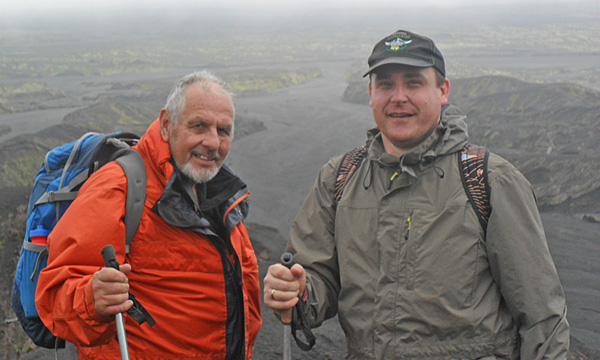The Australian Academy of Science is hosting the 2022 Haddon Forrester King Lecture at the iconic Shine Dome in Canberra. Delayed from last year, Professor Richard Henley will give his lecture on Tuesday 18 April 2023.
Those guests who can join us in Canberra are invited to join for the lecture, followed by refreshments. The lecture will also be livestreamed for those wishing to view from elsewhere.
Date: Tuesday 18 April 2023
Time: 5.30pm – 6.30pm for the lecture, 6.30pm – 7.30pm for refreshments
Venue: The Shine Dome and online livestream (on this page)

The spectacular Hunga Tonga eruption on 15 January 2022 blasted volcanic gases and aerosols over 50km through the atmosphere, and satellite imagery made everyone immediately aware of the enormous amount of energy (61 Mte = 61 million tons TNTequivalent) that had been released. For comparison, the recent Türkiye earthquake released an estimated 50 Mte of energy. The 70 Mte Pinatubo (Philippines) eruption in 1991 injected sulphate aerosols into the stratosphere resulting in global cooling of ~0.5°C for the following two years. The 33,000 Mte eruption of Mount Tambora (Indonesia) in 1815 triggered three years of climate change, initiated the first worldwide cholera pandemic, expanded opium markets in China, and plunged the United States into its first economic depression.
Events like these could happen tomorrow with catastrophic effects on travel, communications, access to fuel supplies, food productivity, climate and, of course, the stock market. So what are the physics of such eruptions and how do you forecast them? How do you see inside a volcano?
The Haddon Forrester King Medal and Lecture was awarded in 2022 to Professor Richard Henley, Honorary Professor, Research School of Physics at the Australian National University.
Over 50 years, Dick Henley has established an international reputation as an applied scientist in the economic geology and geothermal energy sectors. He is particularly well known for innovative and practical solutions of complex problems relating to hydrothermal processes at all scales. He is credited with direct involvement in the discovery of a number of major gold and copper deposits, and has consulted to UNESCO and UNDP in Central and South America and SE Asia. Through 1983–84 he was a Fulbright Scholar in Washington with the US Geological Survey, and in 1995 was the Thayer Lindsley Speaker for the Society of Economic Geologists.
His current research focuses on high temperature chemical and physical processes inside active volcanoes, as well as on applications of high-resolution X-ray mCT to industrial problems. As an active member of the NSW Rural Fire Brigade, he received the National Emergency Medal for support activities through the 2019–20 Bushfire Emergency.
Professor Henley’s award video outlines his work further.
The Haddon Forrester King Medal and Lecture, sponsored by Rio Tinto, is one of the Australian Academy of Science’s prestigious career awards for life-long achievement and outstanding contribution to science.
The award is made in honour of the contributions of the late Haddon Forrester King whose work applied the geological and related sciences to the search for mineral deposits in Australia and elsewhere. Haddon King joined Zinc Corporation as its Chief Geologist in 1946, became Director of Exploration for the merged Conzinc Rio Tinto of Australia (CRA) in 1962 and continued in this capacity until his retirement in 1970. He was a consultant at CRA until 1986.
The award is made to a scientist, resident in Australia or overseas, and normally awarded once every two years. It recognises original and sustained contributions to Earth and related sciences of particular relevance to the discovery, evaluation and exploitation of mineral deposits, including the hydrocarbons.
events@science.org.au
events@science.org.au
© 2025 Australian Academy of Science